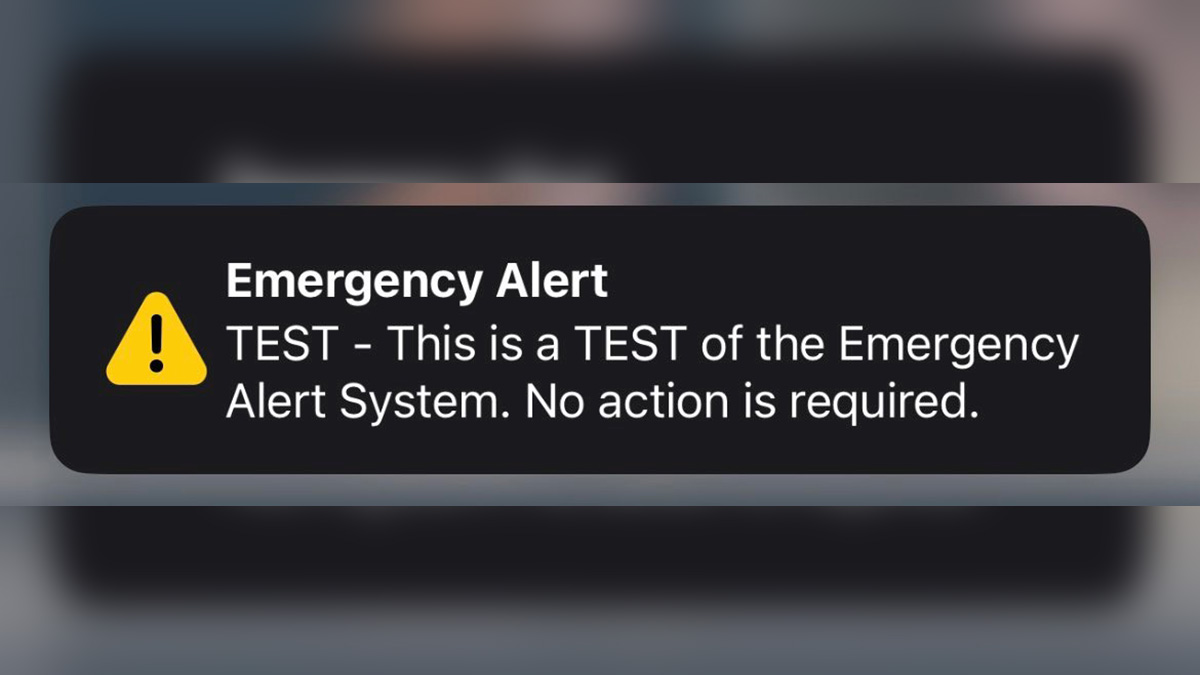A nationwide test of the federal emergency alert system is scheduled for Wednesday afternoon at approximately 2:20 p.m. EDT. This test will simultaneously broadcast emergency alerts to cellphones, televisions, and radios throughout the United States. The test serves a crucial purpose, ensuring the readiness of the emergency alert system.
Understanding Emergency Alerts
The Federal Emergency Management Agency (FEMA) is conducting this test in coordination with the Federal Communications Commission (FCC). Emergency alert messages are divided into two categories: the Emergency Alert System (EAS) for radios and televisions, and the Wireless Emergency Alerts (WEA) for wireless phones. Both of these systems will be tested simultaneously.

This upcoming test marks the seventh nationwide test of the Emergency Alert System. Prior tests were conducted between November 2011 and August 2021. Additionally, this will be the third nationwide test of wireless alerts and the second nationwide test transmitted to all cell phones.
An Expert’s Perspective
Joseph Trainor, a core faculty member at the University of Delaware’s Disaster Research Center, provided insights into the emergency warning systems’ design and operation. He emphasized the importance of having multiple alert systems to ensure effective communication during emergencies. The wireless portion of the test will be initiated through FEMA’s Integrated Public Alert and Warning System. This system allows authorities to send authenticated emergency messages through various communication networks. Wireless alerts are created by authorized government agencies and transmitted to wireless providers through FEMA’s platform. These alerts are then dispatched to compatible phones in specific geographic areas.
Test Duration and Access
Cell towers will broadcast the emergency alert test for 30 minutes starting at 2:20 p.m. EDT. Wireless phones within range of an active cell tower should receive the test message during this time. To ensure accessibility for people with disabilities, alerts are accompanied by a unique tone and vibration. While people can choose not to receive certain emergency alert messages from local authorities or specific agencies, opting out of the nationwide test is not possible. Major wireless providers participate in FEMA’s wireless alert system, ensuring broad coverage.
Addressing Misinformation
The announcement of FEMA’s test has triggered online conspiracy theories, which authorities clarify as being baseless and misrepresentative of the technology’s functioning. The Emergency Alert System test will take place concurrently with the wireless test but will last for only one minute. It will interrupt regular television and radio programming to broadcast a standardized message.
The Purpose of the Test
The test is essential to evaluate the technological capabilities of the national alert system in reaching and informing a widespread audience during emergencies. It also raises public awareness about emergency procedures, fostering preparedness. The exposure to emergency alert tests helps familiarize the public with the emergency response process. It encourages people to think about their actions in a real emergency scenario and reinforces the importance of swift decision-making during a crisis.

As the nationwide emergency alert test approaches, it serves as a reminder of the critical role these systems play in keeping the public informed and safe during times of uncertainty.